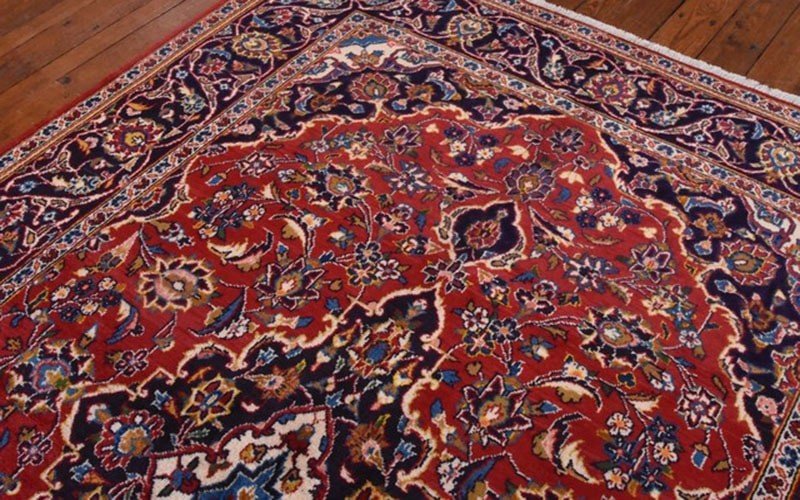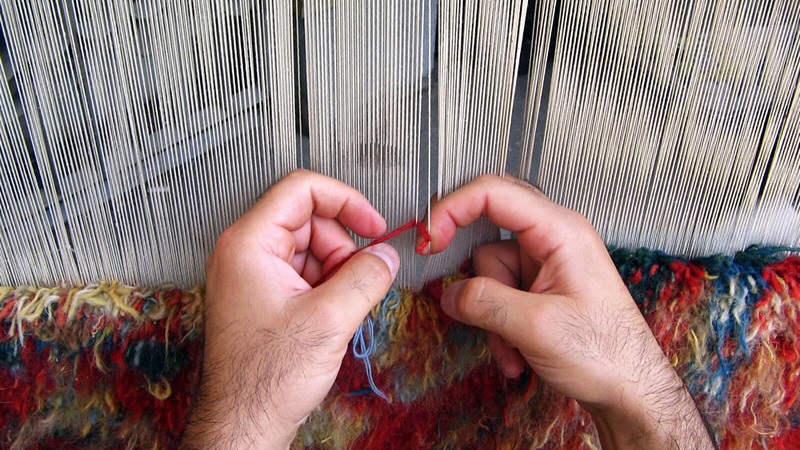Introduction to Kashan Rug Weaving
With its rug weaving, Kashan has been the pride of museums and private collections today and has played a significant role in the artistic revival of Iran. In 2010, UNESCO added the Kashan carpet to its cultural and spiritual heritage list. The fantastic art is not only made by human hands but also a sign of purity of heart and depth of imagination of noble and patient people. Kashan Rug Weaving generally includes the city of Kashan and its suburbs, Natanz and Josheghan. We can divide these productions into two categories according to the plan and technical details of weaving. The first category includes Kashan and Natanz productions, and the second contains Josheghan productions.
The people of Aran o Bidgol in the north of Kashan followed carpet weaving as their primary profession until the First World War. Also, after the Second World War, the establishment of spinning and weaving factories, and the stagnation of fabric weaving, they embarked more attention to carpet weaving. The woven rugs of the Abyaneh region have a Josheghani pattern. Carpet weaving and Josheghani pattern have become popular in Abyaneh due to the efforts of a man from Kamu, who lived in the region about a century ago.

History of Kashan Rug Weaving
In historical records, carpet weaving in Kashan dates to the Safavid period. During the era of Shah Abbas the Great, the city was the centre of court carpet weaving, and by the king, people established carpet weaving workshops in this city. Silk, silver, and golden carpets, known as Shah Abbas carpets, are attributed to the place. Historically, Kashan carpets include two historical periods: a golden period and a period that began after the closure of the carpet weaving workshops of the city for about two centuries. The oldest Kashan carpets belong to the 17th AD century. This century is also called the golden age of Kashan industries. Zari fabrics and exquisite and precious carpets woven in this city at this time are each a masterpiece of weaving and dyeing. In this era, Kashan carpet weaving reached its peak, and the artists of this city left precious examples, some of which are currently attracting countless fans in the world’s major museums.
In the travelogues of tourists who travelled to Iran, you can search the records of carpet weaving in Kashan. For example, Cartwright was one of the Christian missionaries who travelled to Kashan in 1600 AD and praised Kashan rugs and carpets. According to historical evidence, Polish or Polonaise carpets ordered from Iran at the end of the 16th AD century were woven in Kashan. About 120 years ago, during the Qajar rule, a man named Mulla Hassan was an importer of Manchester merino wool in Kashan. After facing a recession in the industry, he turned the remaining wool into carpets with the help of his wife. Since then, it has been customary to use merino wool in the weaves of this region, and because of the quality of this wool, Kashan handwoven carpets have a very soft and velvety surface. In addition, the herding products of Khorasan, Azerbaijan, Kermanshah, and Tehran obtain the rest needed wool for carpet weaving.

Revival of Kashan Rug Weaving
Kashan, like other cities, has not been far from phenomena and disasters during the invasion of Mongol and Afghan tribes and invaders, and the carpet weaving industry has been continuously affected by mishaps. Unfortunately, after the period, carpet weaving, like other areas, declined. The revival of carpet weaving in Kashan is significantly due to the activities of Haj Hassan, Haj Mohammad Jafar Esfahanian, and Ustad Hossein Kashi. And on the other hand, the use of machine textile units forced some of the weavers of this city to turn to carpet weaving.
In the continuation of the revival of carpet weaving, we should mention Mr. Mohtasham, a famous designer and weaver. Who brought the art of weaving to its peak in Kashan by presenting eternal plans and stunning carpets. Nowadays, Kashan, Qom, Josheghan, and the weaving centres of eastern Europe, such as Albania and Romania, have imitated Mohtasham’s designs.
Features of Kashan carpet
One of the characteristics of the Kashan carpet is its exquisite texture. And this feature makes the patterns used in the Kashan carpet stand out. The warp and weft material of the Kashan carpet is cotton yarn, and the background of most of them is red with navy blue borders. Nowadays, carpet weavers have woven Kashan carpets in different sizes and dimensions. But their fame is due to weaving small carpets like the prayer rug. The designs used in Kashan carpets are taken from the plans of Isfahan carpets. We can mention the Altar (Mehrabi), Medallion (Toranj), Hunt (Shekar), Pot (Goldani), Tree (Derakhti), Botthe Jogheh, Prayer mat (Sajadeh), and Star (Panj Par) carpets among its most famous designs. Yarn dyeing is one of the handicrafts related to Kashan carpet weaving, and people use plants for it. Walnut skin, pomegranate skin, and grape leaves are among the used plants for dyeing wool.

The story of the famous carpet of Sheikh Safi-ad-din Ardabili
About the art of carpet weaving in Kashan, it is necessary to mention that the master of the well-known Sheikh Safi-ad-din Ardabili carpet was Maqsood Kashani. The Victoria and Albert Museum in London has kept the exquisite relic, now. It is famous since there are many copies of its design, and today, you can see the Ardabil carpet design in many homes. The carpet of the Sheikh Safi-ad-din Ardabili tomb is famous as the Sheikh Safi carpet or Ardabil carpet in the world. But some reliable Iranian and foreign books mentioned it as the Ardabil Mosque carpet. This carpet has a long story until it reaches the Jameel Gallery Hall in the Victoria and Albert Museum.
At the beginning of its weaving, the Ardabil carpet had a pair, which was the identical shape, and the master artist Maqsood Kashani woven them during a 16-year process with his hands. Master Maqsood Kashani used the utmost creativity and innovation in the design and patterning of these carpets. Finally, he had reached a masterpiece, which has dazzled the eyes and aroused the admiration of every viewer since then. The value and quantity of these silk masterpieces did not diminish over time, and the two British travellers who visited Sheikh Safi-ad-din’s tomb in Ardabil in 1843, wrote in their memories about the wonder of the magical beauty of these two carpets.
About thirty years after this memory and written evidence, a severe earthquake spilled part of the vault of Sheikh Safi-ad-din Ardabili ‘s tomb onto the carpets and damaged them. So, the guardians looked for a way to cover the restoration costs. Therefore, they asked for help from the English company Ziegler & Partners, which was in the carpet business. Ziegler buys carpets for 80 Tomans and transports them to England in a short time. Ziegler & Partners entrusted the rugs to patient restorers, who fixed both rugs in a calm and confident process. But the two carpets were no longer a match after the restoration. To amend one of the carpets, they used the border of the other one. And the result of the process was the rebirth of a complete carpet and a rug without borders.
Of course, these carpets were in great demand even under these conditions and were sold several times. Until Vincent Robinson & Associates put the larger rug up for auction in 1892. So, William Morris, a well-known author, and expert saw the carpet at this time and described it as wonderful and unique. And prompting the authorities of the Victoria and Albert Museum to purchase it.

